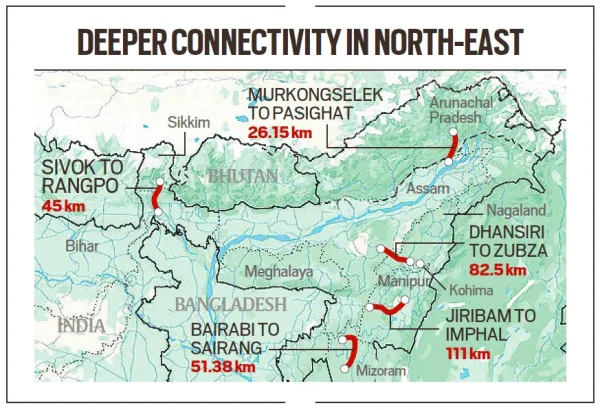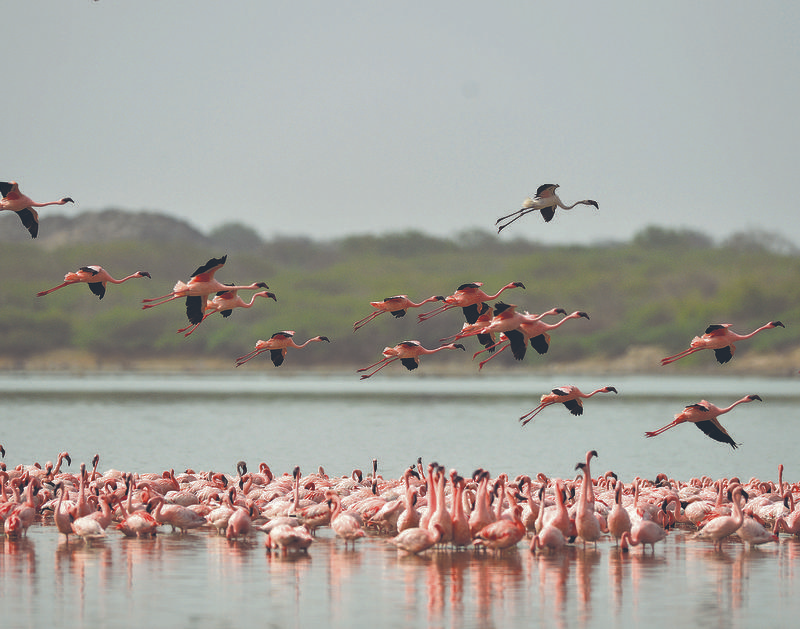Discovery of Three Tombs in Luxor
Syllabus: GS 1/Historical Places
In News
- Egyptian archaeologists have discovered three ancient tombs in the Dra Abu al-Naga necropolis in Luxor, dating back to the New Kingdom period (1550–1070 BC).
Luxor and discovery of tombs
- It is located on the east bank of the Nile River in Egypt.
- It is home to numerous historic landmarks, including the Luxor Temple, Karnak Temples, the Valley of the Kings and Queens, and several funerary temples and noble tombs.
- The newly discovered tombs belonged to high-ranking officials:
- Amum-em-Ipet from the Ramesside period, who served in the estate of Amun;
- Baki, a grain silo supervisor from the 18th Dynasty;
- and “S,” a senior official and mayor of the northern oases.
- These tombs contain courtyards, halls, and burial shafts, although some are damaged or incomplete.
- Various artefacts and statues were also found, with ongoing research aimed at revealing more about the tombs’ occupants.
Source :TH
Cholera
Syllabus :GS 2/Health
In News
- A cholera outbreak has killed many people in the war-torn Sudan.
Cholera
- It is a serious diarrheal illness caused by ingesting food or water contaminated with the bacterium Vibrio cholerae.
- It remains a significant global public health concern, reflecting deep social and economic inequalities.
- Symptoms: Cholera typically causes sudden, severe watery diarrhea that can lead to death within hours if not treated.
- Effect: A 2024 World Health Organisation (WHO) report noted that cholera deaths have shown an uptick in recent years and attributed the cause to climate change and poor sanitation.
- Preventing cholera and other waterborne diseases relies heavily on access to clean water, adequate sanitation, and proper hygiene.
- While most cholera cases involve mild to moderate diarrhea and can be treated effectively with oral rehydration solution (ORS), the illness can escalate quickly.
Source: TH
Aizawl Joins National Railway Network
Syllabus: GS3/Infrastructure
Context
- In a major boost for connectivity in the North-East, Mizoram’s capital Aizawl is now linked to the national railway network via the Bairabi–Sairang line.
About the Bairabi–Sairang line
- The 51.38-km railway project extends rail services from Bairabi in Kolasib district—Mizoram’s only previous railhead—up to Sairang, a satellite town of Aizawl, around 20 km from the city.
- This development makes Mizoram the fourth North-Eastern state to have its capital connected by rail, after Assam, Tripura, and Arunachal Pradesh. Earlier, trains could only reach up to 1.5 km inside Mizoram.
- The Bairabi–Sairang line is part of a larger push by the Ministry of Railways to connect all North-East state capitals and improve regional infrastructure.
- This milestone is expected to bring greater economic opportunities, improve transport access, and strengthen integration between the North-East and the rest of India.

Source: IE
Viksit Krishi Sankalp Abhiyan
Syllabus: GS3/ Agriculture
Context
- The Union Agriculture Minister launched the Viksit Krishi Sankalp Abhiyan (VKSA-2025) at Central Institute of Freshwater Aquaculture, Bhubaneswar, aiming to empower more than 1.5 crore farmers across the country.
What is the Viksit Krishi Sankalp Abhiyan?
- It is a nationwide agricultural outreach campaign to promote sustainable agricultural development by integrating scientific knowledge, modern technology, and farmer feedback.
- The campaign aims to bridge the gap between “lab and land”, empowering farmers through direct interaction with over 16,000 agricultural scientists, Krishi Vigyan Kendras (KVKs), and government officials.
Key Features of the Campaign
- Nationwide Reach: Over 2,000 teams will visit 2,170 locations across 700+ districts, covering nearly 1.5 crore farmers over a 15-day period.
- Two-Way Communication Model: Scientists will provide customized advice on seed varieties, fertilizers, crop choice, and soil health.
- In return, they will collect data on farmer challenges for guiding future research and policy.
- Promotion of Diversified Income Sources: Encouragement for adoption of solar farming, beekeeping (Sweet Revolution), nutri-cereals (Shri Anna), Gobardhan Yojana, and agricultural waste-to-energy initiatives.
Source: PIB
Biostimulants
Syllabus: GS3/ S&T
In News
- In a move to boost India’s agri-input industry, the Government has registered 34 new biostimulants.
About Biostimulants
- Biostimulants are substances or microorganisms that enhance plant growth, yield, and stress tolerance, but do not directly provide nutrients like traditional fertilisers.
- Various types of biostimulants are seaweed extracts, humic and fulvic acids, amino acids & certain beneficial fungi and bacteria.
- They are incorporated under the Fertiliser Control Order (FCO) in 2021 as a distinct category of fertilisers.
Source: TH
Amazon Rain Forests
Syllabus: GS3/ Environment
Context
- The recent release of the book “How to Save the Amazon”, completed posthumously in honor of British journalist Dom Phillips, brings renewed global attention to the significance and fragility of the Amazon Rainforest.
Amazon Rain Forests
- Location: The region belongs to nine nations of the South American continent.
- It is bounded by the Guiana Highlands to the north, the Andes Mountains to the west, the Brazilian central plateau to the south, and the Atlantic Ocean to the east.
- Area Covered: The majority of the forest, 60%, is in Brazil, followed by Peru with 13%, Colombia with 10%, and with minor amounts in Bolivia, Ecuador, French Guiana, Guyana, Suriname and Venezuela.
- Climate: Hot and humid climate with temperatures of 26-30°C throughout the year.
- There are no periodic seasons.The precipitation ranges from 2,000 mm to 10,920 mm annually.
- Tribes: Yanomamo, Kayapo, Akuntsu, Matses, Tupi etc.
- Fauna: Anaconda, Jesus lizard, howler monkey, golden lion tamarin, jaguar, sloth, spider monkey, Amazon River dolphin, toucan and the scarlet macaw, poison dart frog and the glass frog.
- Flora: Moist broadleaf tropical rainforest like myrtle, laurel, palm, acacia, rosewood, Brazil nut, rubber tree, mahogany and Amazonian cedar.
Significance of the Rainforests
- Lungs of the planet: Rainforests generate about 20% of the world’s oxygen and its trees play a key role in reducing pollutant levels.
- Fight climate change: They act as a crucial buffer in the global fight against climate change as it holds tremendous capacity to store carbon.
- Medicinal Properties: Many of these plants contain bioactive compounds capable of treating diseases that are not yet curable, especially cancer.
Threat to the forests
- Climate Change: Due to climate change the forests are witnessing various challenges like changes in rainfall patterns,pollution etc.
- Deforestation: The size of the Amazon forest shrank dramatically as a result of settlers’ clearance of the land to obtain lumber and to create grazing pastures and farmland.
- Wildfires: It causes threat to the survival of ecosystems and biodiversity. The 2019 forest fires in the region have led to widespread devastation in the region.
Source: IE
Operation Chakra-V
Syllabus: GS3/ Internal Security
In News
- The Central Bureau of Investigation (CBI) has uncovered a transnational cybercrime network under the Operation Chakra- V.
About
- Operation Chakra-V targets sophisticated cybercrime syndicates involved in transnational tech support scams, digital arrest & other financial frauds.
- Measures taken to combat cybercrime are Indian Cyber Crime Coordination Centre (I4C), CERT-In (Indian Computer Emergency Response Team), Cyber Swachhta Kendra etc.
Source: PIB
Exercise NOMADIC ELEPHANT
Syllabus: GS3/Defence
Context
- The Indian Army is going to have the 17th edition of the India-Mongolia Joint Military Exercise NOMADIC ELEPHANT at Ulaanbaatar, Mongolia.
About the Exercise
- Exercise NOMADIC ELEPHANT is an annual bilateral military exercise conducted alternately in India and Mongolia since 2006. The last edition of the same exercise was held in Meghalaya, India in 2024.
- The aim of the exercise is to enhance interoperability between the two forces while employing a joint task force in semi conventional operations in semi urban/ mountainous terrain under United Nations mandate.
Source: PIB
Flamingos
Syllabus :GS 3/Species
In News
- Recently, Flamingos have arrived in large numbers at the Chhaya pond in Porbandar town of Gujarat.

Flamingos
- They are known for their striking pink feathers, long legs, and graceful necks, though they hatch with dark grey downy feathers.
- They are highly social animals that often live in large colonies, occasionally assembling in groups that number in the thousands.
- Habitat : They live in a wide variety of habitats such as lagoons, estuaries, coastal and inland lakes, and mudflats.
- These habitats often have harsh conditions, including very salty water.
- The flamingo species and their IUCN Red List status are
- The greater flamingo – Least Concern
- Chilean flamingo – Near Threatened
- American flamingo – Least Concern
- Lesser flamingo – Near Threatened
- Andean flamingo – Vulnerable
- James’s flamingo (puna flamingo) – Near Threatened
- Status in India : Greater flamingos usually migrate to India from Israel, Afghanistan, and Pakistan. The greater flamingo is the State bird of Gujarat.
- Lesser flamingos migrate from Siberia to Mumbai via the Rann of Kutch in Gujarat.
Source :TH
Next article
Bonded Labourer in India